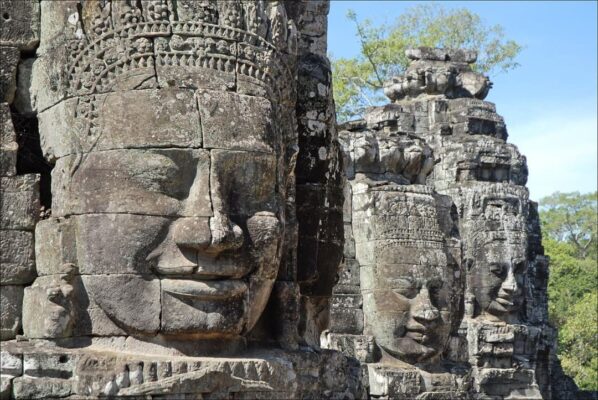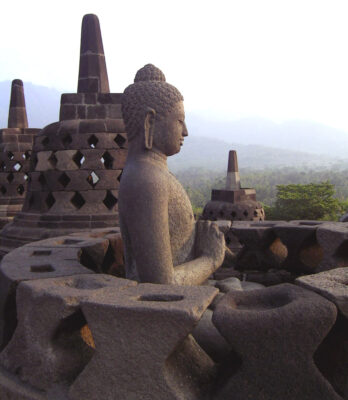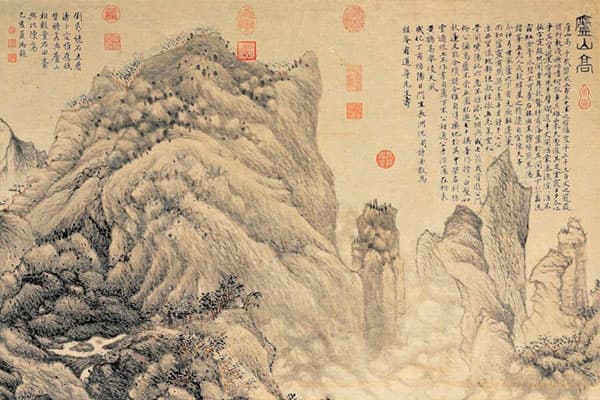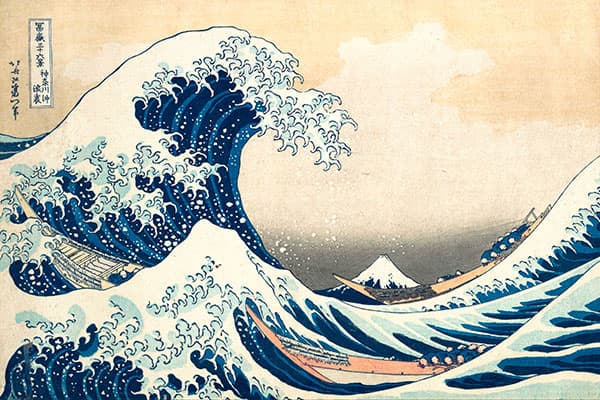Southeast Asian Art
Stone giants in the jungle
“The gates of each entrance are magnificently sculpted, so perfect, so delicate that Antonio da Magdalena, who was in this city, said that they looked as if they were made from one stone. (…) Half a league from this city is a temple called Angar. It is of such extraordinary construction that it is not possible to describe it with a pen, particularly since it is like no other building in the world. It has towers and decoration and all the refinements which the human genius can conceive of.”
Diogo do Couto, Portuguese historian, after the 1585 expedition led by Antonio da Magdalena to Angkor (retrieved from “The Origins of the Civilisation of Angkor”, by Charles F. W. Higham, 2002)
Images: Colossal heads at Bayom, Angkor Thom, Cambodia, 1195-1218. Photograph by Jean-Pierre Dalbéra ·· Buddha of Borobudur, Indonesia, 9th century. Photograph by Jan-Pieter Nap
Situated between Asia’s two largest and most influential civilisations, China and India (whose art is studied in separate essays), the different cultures of Southeast Asia were influenced to a greater or lesser extent by them, while retaining distinctive characteristics that make them unique.
Thai art is clearly linked to Buddhism, reaching its maturity during the Sukhothai Kingdom (1238-1438) and its apogee during the Bangkok Period (1767-1932), at the end of which Western influence is noticeable, especially in painting. Thai Buddhist sculpture is similar to that of Laos, which borders Thailand and has an outstanding tradition of weaving and embroidery.
The high point of Southeast Asian art is undoubtedly the artistic production in Cambodia during the Khmer Empire (802-1431), when Angkor was one of the most important cities in the world. The magnificent Angkor Wat complex, initially Hindu and later incorporating Buddhist works, was once the most important artistic centre in Southeast Asia. It should be noted that, although the influence of India is present in Khmer art, it retained its own unique characteristics. In the case of Angkor, “the monumental wonders of Angkor could not possibly have been built the way they were without the religious, technological and artistic inspiration of their neighbour to the west: yet Angkor was never an Indian city” (“Art of Cambodia: Interactions with India”, MARG Magazine, 2015-2016)
In the case of Malaysia and Indonesia, located in the extreme southeast of the continent, their geography, made up of several islands in a vast geographical framework, makes them enormously diverse, combining monumental Buddhist temples (such as Borobudur) with tribal masks that can be considered more Melanesian than Asian.
Follow us on:




